If you buy through our links, we may earn an affiliate commission. This supports our mission to get more people active and outside.Learn about Outside Online's affiliate link policy
The Best Women’s Hiking Boots and Shoes (2025)

(Photo: Evan Green)
Hikers rely on few pieces of gear as intimately as their hiking boots. A well-fitting pair can help the miles fly by, while the wrong boots make every step a pain. We tested dozens of women’s hiking boots over a variety of terrains to find the best options for every hike, from day trips to mountain expeditions. These nine rose to the top of the pile after impressing our testers the most with their fit, comfort, weatherproofing, and durability.
At A Glance
- Best All-Around: La Sportiva Aequilibrium Hike GTX ($279)
- Best for Thru-Hiking: Topo Traverse ($155)
- Best Hiking Sandal: Bedrock Cairn EVO ($115)
- Best for Day Hikes: Adidas Free Hiker 2 Low GTX ($180)
- Best Traction: Danner Crag Rat EVO ($380)
- Best Hiker / Trail Runner Hybrid: Hoka Speedgoat 6 ($155)
- Best for Hot Weather: Oboz Katabatic Wind ($185)
- Most Agile: Salomon Cross Hike Tracker GTX ($200)
- Best for Getting Your Feet Wet: Astral TR1 Mesh 2.0 ($149)

Best All-Around
La Sportiva Aequilibrium Hike GTX
Weight: 13.4 oz per shoe
Sizes: 36-42
Pros and Cons
+ Out-of-box comfort
+ Versatility
+ Support
– On the pricy side
La Sportiva’s Aequilibrium Hike GTX has been a unanimous standout with testers since 2024. (When one tester thought it might be discontinued, she texted us: “I want to die.”) Though it’s designed for three-season alpine expeditions and carrying packs up to 40 pounds, testers found it instantly comfortable and light enough to be their go-to for short hikes, too.
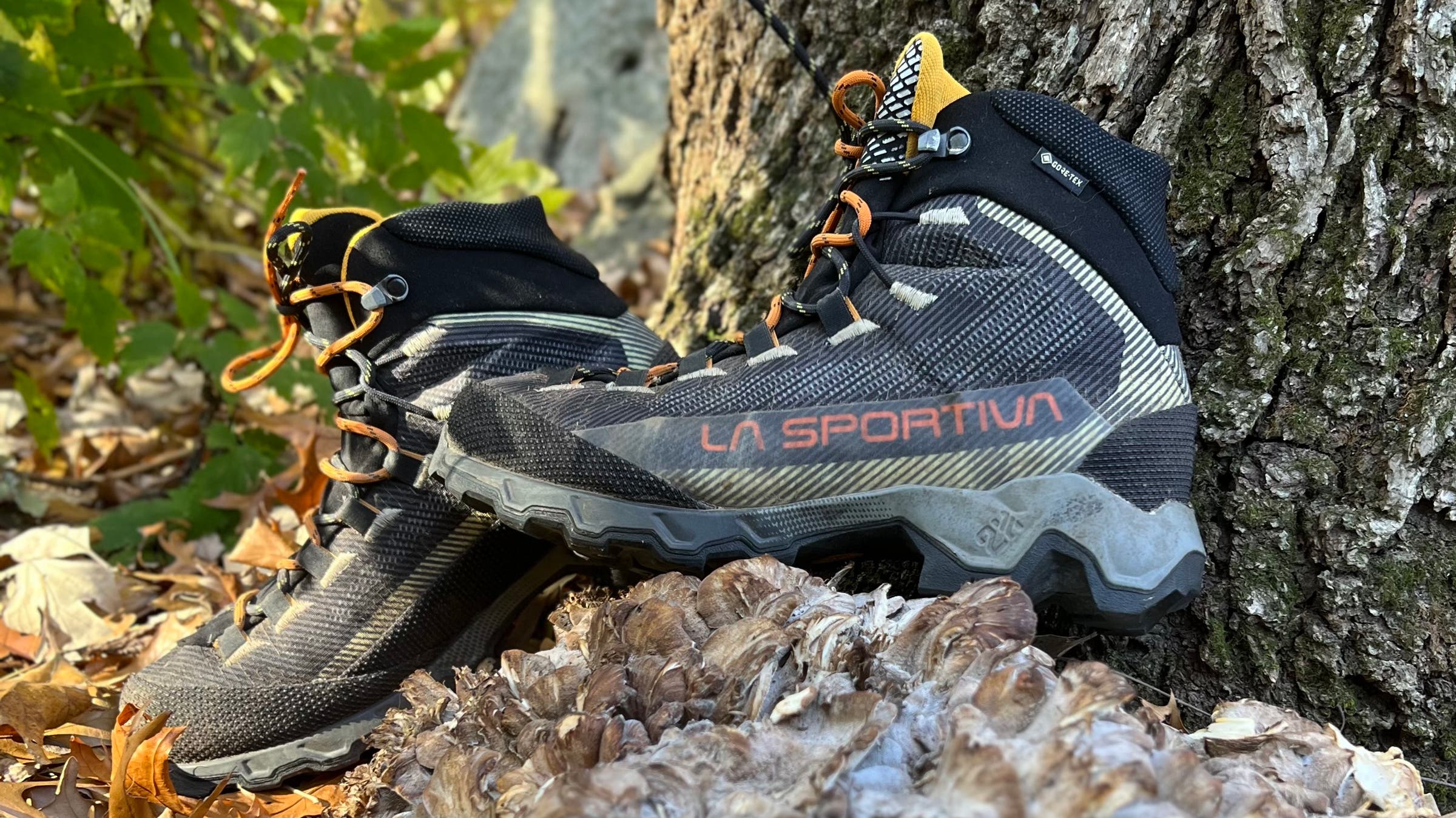
The Aequilibriums are made to last. Their PU foam midsole with a polypropylene stiffener did a better job protecting the soles of testers’ feet and held up longer to wear and tear over long trips than EVA foam. An abrasion-resistant welt and fabric at the toe and heel were pristine after more than 100 miles, and the PU-injected rubber outsole felt bouncy and cushioned, even on cement, gravel, and other hard surfaces. “I wore them through water, mud, gravel, sand, on-trail, off-trail, over logs, you name it,” reports Wisconsin-based tester Rachael Drechsel. “They have not torn, ripped, or gotten worn down.” If you do somehow manage to wear down the tread—a grippy, multi-directional set of lugs—the boot is resoleable.
A breathable, water-repellent fabric upper and bellow tongue, both backed with Gore-Tex lining, stayed bone dry in streams and other water crossings. “I wore these to carry my wife through a shallow lake,” Madison, Wisconsin-based tester Colleen Michelson reported. “She wasn’t wearing waterproof boots. I was her hero!”
Testers loved the out-of-box fit, too, thanks in large part to the boot’s high, stretchy ankle that resembles a neoprene sock, feels like a gentle hug, and offers protection from dirt and gravel. It’s a far cry from the hard leather of hiking boots past that rubbed your ankles raw as you walked. When Cardi B sang “I like those Balenciagas, those ones that look like socks,” she clearly hadn’t tried the La Sportiva Aequilibrium Hike GTX yet.
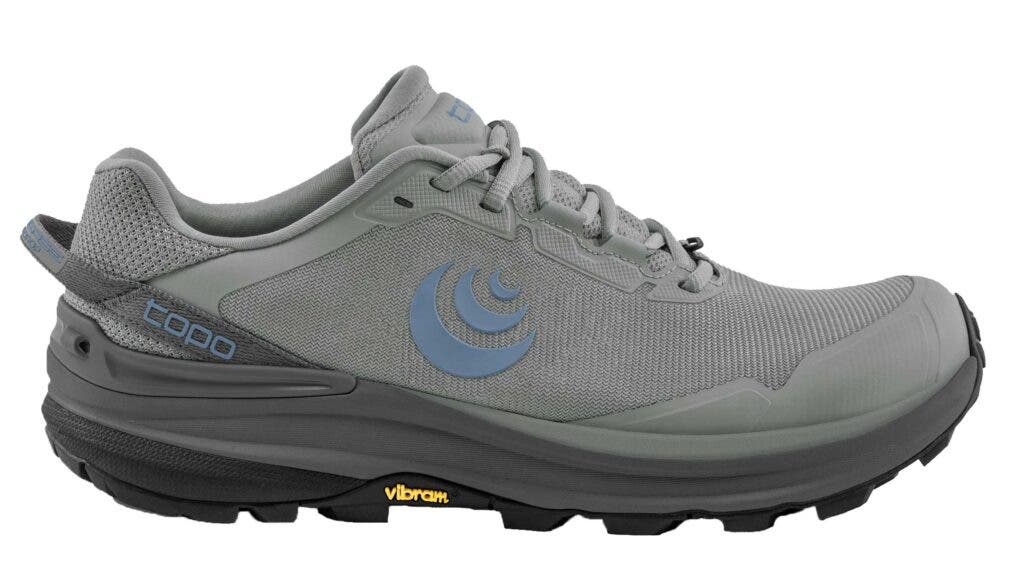
Best For Thru-Hiking
Topo Traverse
Weight: 8.7 oz
Sizes: 6-11 and 12
Pros and Cons
+ Versatile
+ Lightweight
+ Feature-rich
– Not super protective
Topo is far from the first brand to take the trail runner model and beef it up to handle the rigors of thru-hiking, notorious for chewing up cushy low-tops after just a few hundred miles. But its Traverse is one of the most thoughtful, well-engineered examples we’ve ever encountered. The tightly-woven polyester blend mesh upper is secure, flexible, and adept at hiding stains and dirt. Rubber panels offer reinforcement in key locations—although not enough to protect against sharp thorns—and a forefoot rock plate offers protection from bruising. The closed-cell foam insole doesn’t absorb water was readily as standard foam, and drains a bit more easily thanks to a clever dimpled texture. A dual-density EVA midsole with a TPU heel wrap, chosen for the abuses of daily thru-hiking, offers stability and support to hikers wearing multi-day loads.

The Traverse’s greatest strength, apart from its versatility, is its lightness; at just 8.7 ounces—a true trail runner weight—they feel almost like protective socks. Tester Chrissie Bodznick wore them on a six-mile trail run in northern Michigan while wearing a 25 pound pack, with stops to rock hop, scout trails, and trek in sand along the way, and reported that she’d be confident wearing them for just about everything. (Plus, as she points out, “they look neutral and good with most outfits.”) Bonus details? A generous heel loop to pull the shoes on and off, gaiter attachment points on the toe and the heel, and the same wide toe box that Topo running shoes are well loved for.

Best Hiking Sandal
Bedrock Cairn EVO 3D Pro Sandal
Weight: 8.5 oz
Sizes: 6-15
Pros and Cons
+ Lightweight
+ Comfortable
+ Stay in place
– No toe protection
– Minimal arch support
If you’re partial to fresh air on your toes, Bedrock’s Cairn EVO 3D Pro Sandal offers a super-secure fit that makes it an excellent option for short and long treks alike. The Pro improves on Bedrock’s previous models with the addition of recessed stitching for durability, along with a wider toe box and Vibram Megagrip outsole that adds loads of traction in mud, dirt, and rock.

A zero-drop molded footbed with arch- and toe-support and EVA foam midsole offer enough structure for hikes with midweight to heavy packs, though it’s wise to start light if you’re new to trekking in sandals. (Consider cloven socks, too, if you plan to wear them in cool weather.)
Thanks to three different adjustment points, testers found dialing in the polyester-nylon straps was easy. “I felt so secure in these shoes,” reported Montana-based tester Chrissie Bodznick. “I went swimming in freezing cold Lake Superior and they stayed on like a charm, no movement. Then I immediately went for a jog with a sled dog whose whole job is running—and at my fastest sprint, I could almost keep up with her!”
The unique style looks great, too. “They’re probably not going to pass for high fashion in NYC,” says Bodznick. “But if you like to fly fish and your Instagram handle is, ‘wonderingwanderer,’ you need these shoes for sure.”
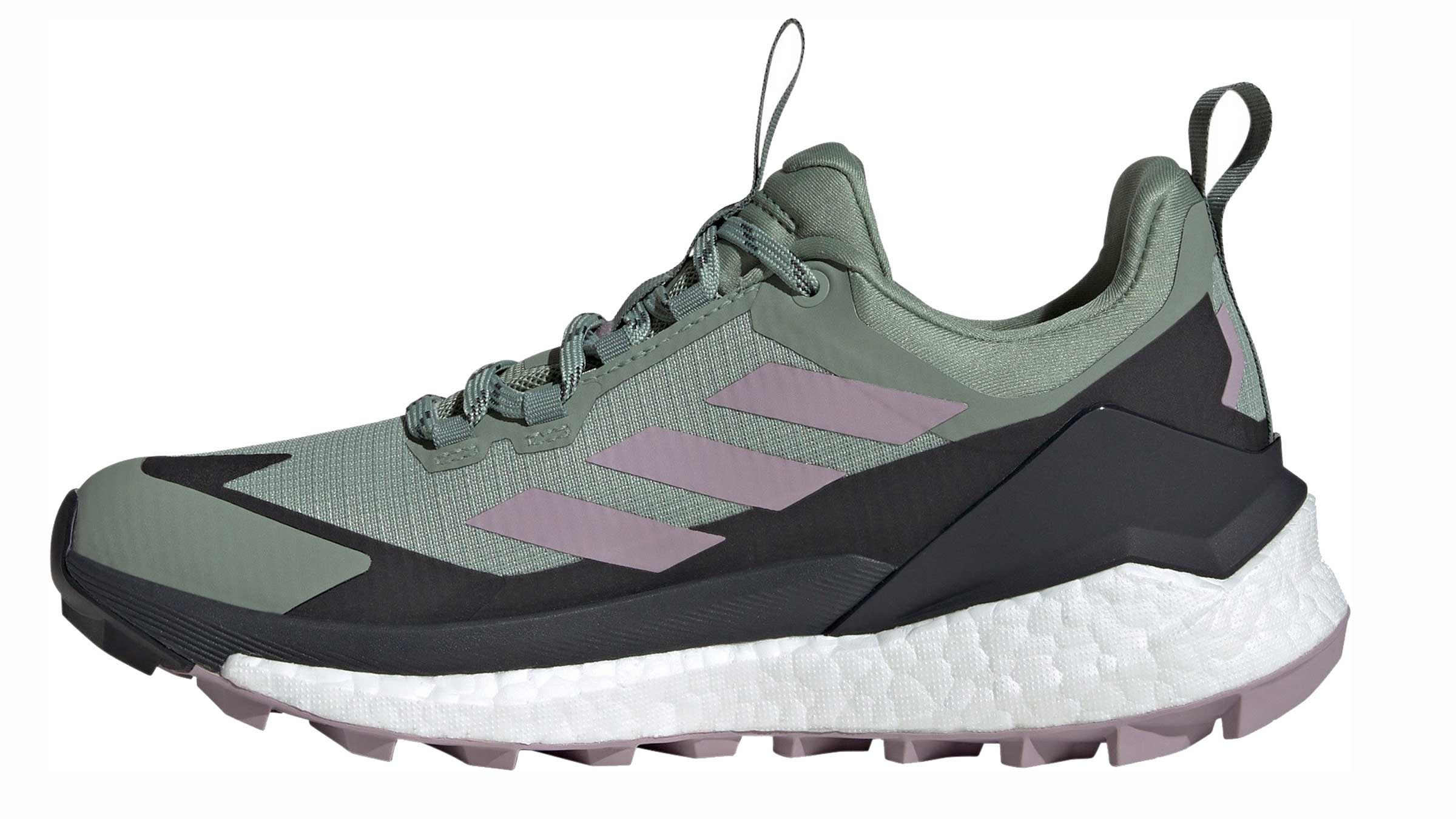
Best for Day Hikes
Adidas Terrex Free Hiker 2 Low GTX
Weight: 13.5 oz
Sizes: 5-11
Pros and Cons
+ Stylish
+ Lightweight
– Lacks support
The Adidas Free Hiker Mid made a splash in 2019 with its modern style and extra cushion, and this model adapts those features into a more versatile low-cut shoe. Like its taller counterpart, it features ample cushioning, a Gore-Tex lining, and a gusseted tongue for a snug fit. Traction is excellent, thanks to large, long lugs that follow the flow of the stride from the outside of the heel to the inside of the forefoot, and shallower Y-shaped lugs everywhere else for multi-directional grip. The midsole is made of a foam-like eTPU—a thermoplastic polyurethane with expanded closed cells—that has high tensile strength and resists compression, delivering a durable, bouncy ride.

Though the Free Hiker 2 Low GTX was designed for thru-hiking, with the extra stability of a heel counter and midfoot-supporting torsion bar, our testers found that it lacked the combination of stiffness and cushion that kept them comfortable for long miles with a heavy pack. They loved the shoe for day hikes, however, and appreciated its versatile, stylish looks, and an easy-to-clean, PFC-free ripstop upper. “They’re a good lightweight hiking shoe with extra style,” reported tester Chrissie Bodznick, who found the shoes comfortable for short sprints, even after long days on her feet with a 20-pound pack.

Best Traction
Danner Crag Rat Evo
Weight: 2.1 lbs
Sizes: 5-11
Pros and Cons
+ Incredible traction
+ Crampon compatibility
– Cost
– Break-in time
Danner reached out to a local search and rescue team, the Crag Rats, in Hood River, Oregon, for inspiration when developing this boot. The SAR team’s main asks? A fast-drying and durable boot for the backcountry. Not only is this high-cut synthetic boot tough as nails, the open-cell polyurethane footbed has three layers of density, providing enough comfort and support to hoof a full pack across treacherous terrain.
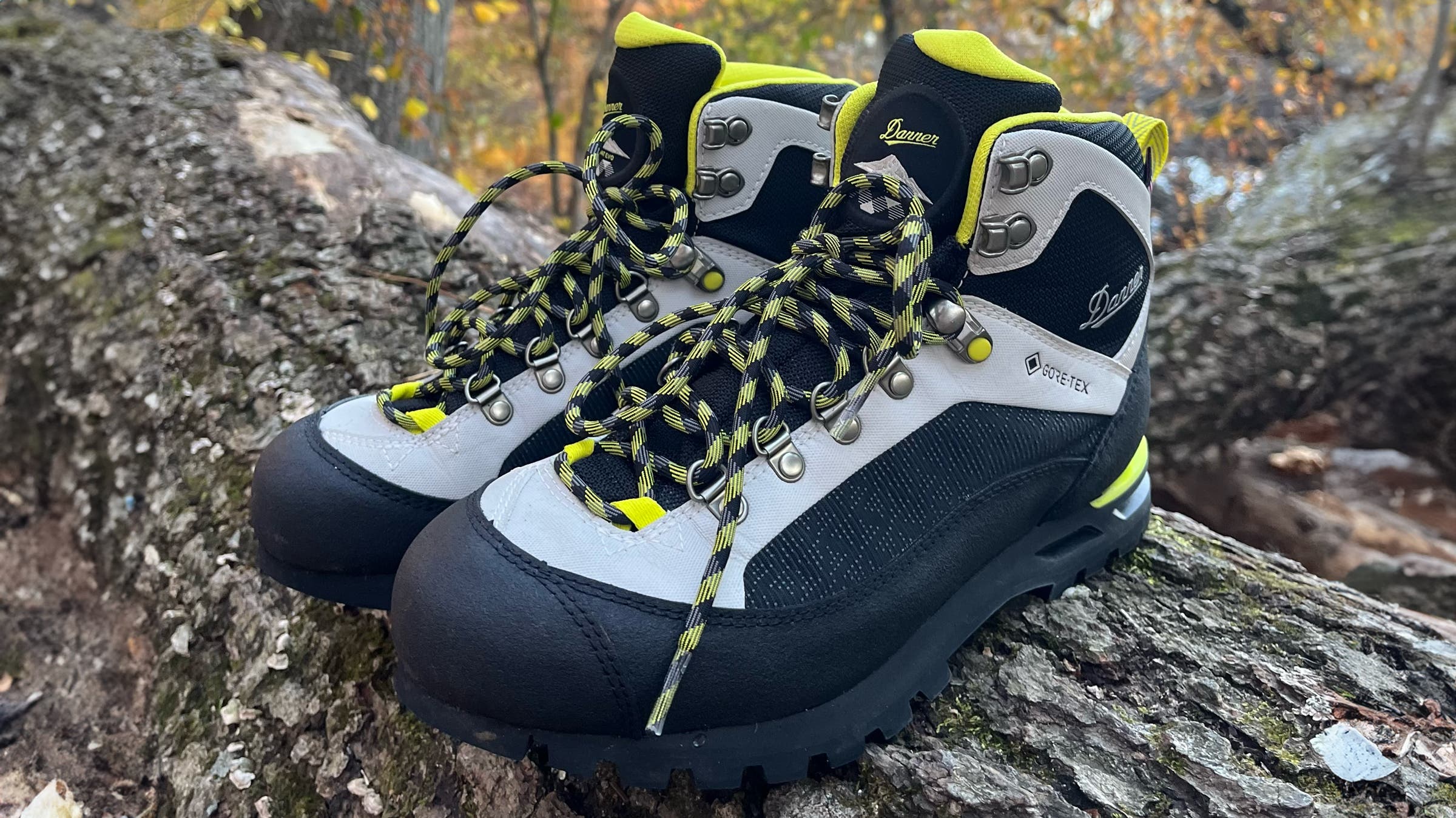
But the Crag Rat Evos might be most remarkable for their traction: “It was shocking how much trust I was able to put in them,” reported tester Allison Bodznick. “I hiked granite scrambles at the Blue Ridge Reservation near Boston, and could traipse up and down rock faces that had everyone else descending nervously on their butts.” Thanks to a lightweight Vibram Mulaz outsole and multi-directional lugs that are spaced to shed pebbles and dirt, these boots absolutely shine when it comes to descending in steep, slippery, or unstable conditions.
As you’d expect from a boot designed for search and rescue, these boots do well in the elements: a Primaloft aerogel toecap provides warmth without bulk, and the Gore-Tex lining and wraparound rand kept testers dry and protected. It’s even got a heel welt for semi-automatic crampons. The downside to boots designed for long-term, heavy-duty use, rather than soft, out-of-the-box comfort? The stiff polyurethane-coated polyester upper is prone to creasing as the boot breaks in, and testers found that their feet slid forward on steep descents, which led to hot spots, although this improved with break-in. To make the most out of these burly mountain boots, expect to take a few dayhikes first.

Best Hiker / Trail Runner Hybrid
Hoka Speedgoat 6
Weight: 8.2 oz
Sizes: 5-12, normal and wide
Pros and Cons
+ Available in wide and GTX versions
+ Super grippy
+ Ultralight
+ Breathable
– Not particularly durable
For confident strides on slick terrain, we loved Hoka’s Speedgoat 6, which, as one tester reported, “stuck like velcro to slopes.” Its prime traction comes thanks to a Vibram MegaGrip outsole with aggressive multidirectional 5 millimeter lugs, split across the heel à la goats’ hooves. “I never worried about hiking on wet rocks, steep inclines, or loose pine needles,” confirmed Wisconsin-based tester Rachael Drechsel, whose favorite Speedgoat trek was an all-day mushroom hunt in late August. “I felt light on my feet, and the mesh uppers were super breathable when it got hot. Plus, we found a ton of mushrooms!”
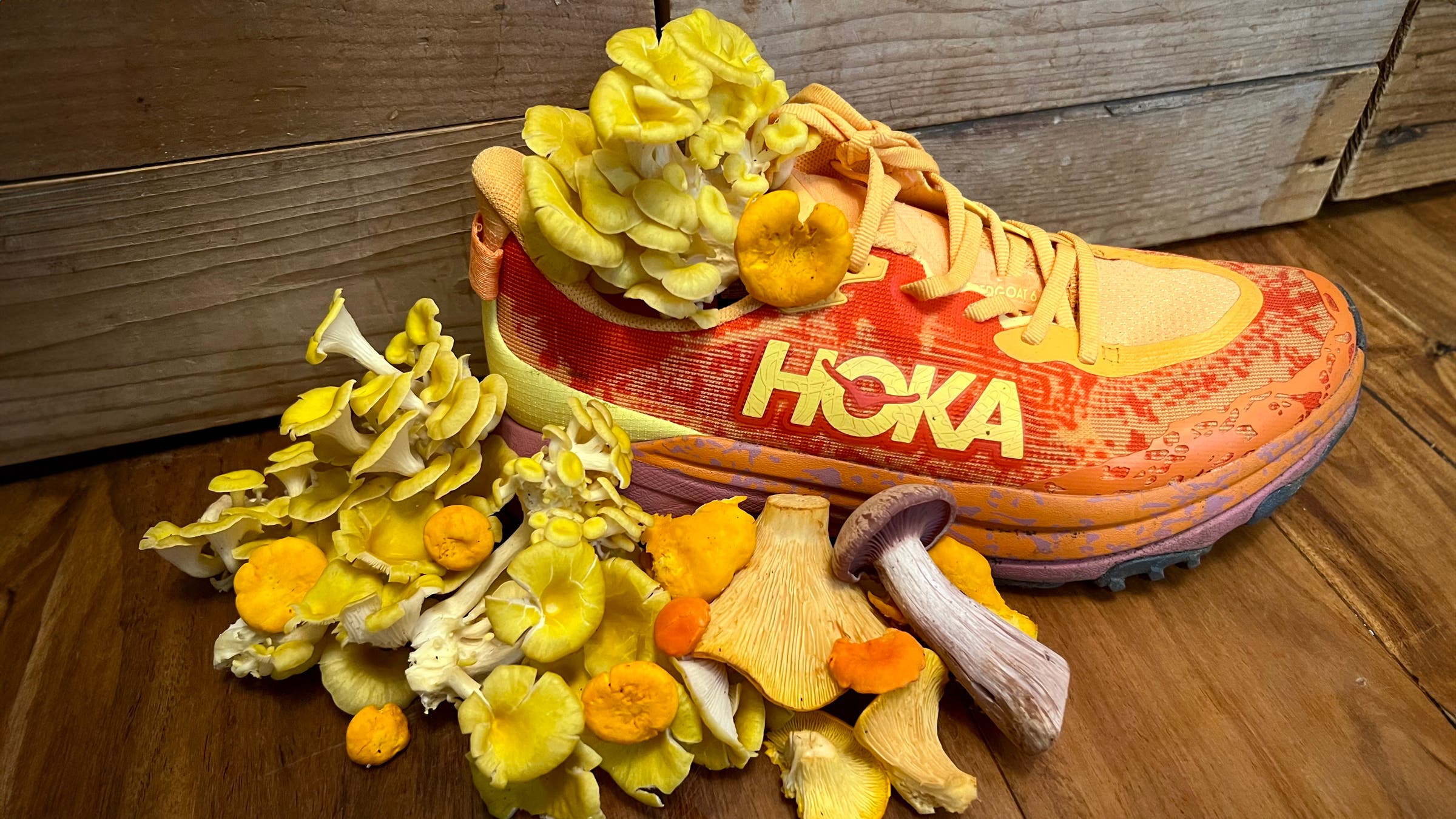
Previous Speedgoat models have been beloved by trail runners for their cushion and traction, which remains blessedly unchanged. The Speedgoat 6 makes notable improvements over the 5, with 8.5 grams shaved off the weight and a compression-molded EVA midsole that’s slightly firmer than previous versions’ but retains its bounce well over time. The woven polyester uppers are slightly more rigid and durable for brushy or off-trail use. Drechell found the shoes a little stiff right out of the box, but after just five miles, they’d conformed to her feet enough that she didn’t want to take them off.
While the Speedgoat 6 is an excellent option for fast hikers and trail runners crossing rough terrain, the grippy outsole’s softness does lead to fast wear. If you plan to stay on dry, flat, or otherwise non-technical terrain, you’ll get more mileage out of a less sticky hiking shoe.
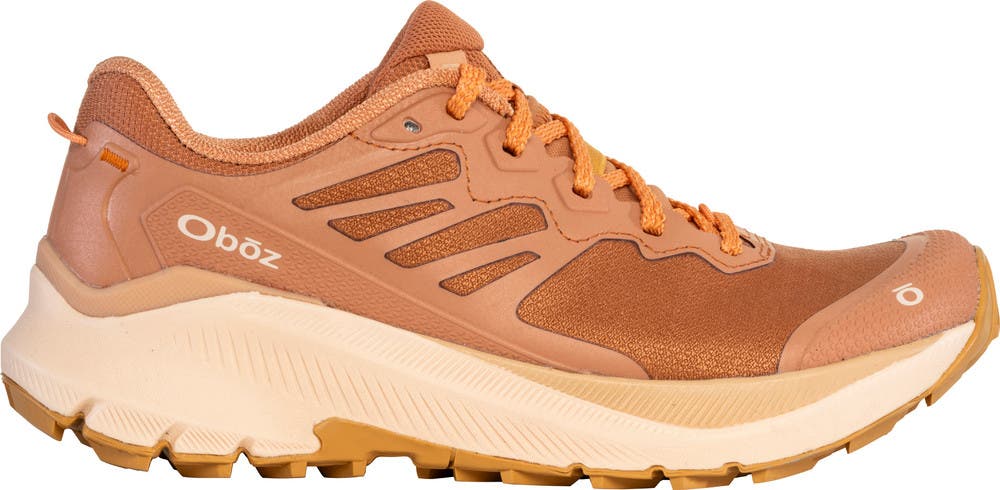
Best for Hot Weather
Oboz Katabatic Wind
Weight: 10.2 oz
Sizes: 6-11
Pros and Cons
+ Uses recycled materials
+ Bouncy rebound
+ Super breathable
– No GTX option
The Katabatic Wind, a shoe for fastpackers and athletic hikers with light packs, was a favorite of Connecticut-based tester Allison Bodznick for what she calls its “magical rebound” and an outsole that sticks to the ground like frog feet on wet rocks. The shoe features a nitrogen-infused, dual-layer foam midsole (softer over firmer) that makes it pleasantly bouncy, while a forked carbon fiber plate and upward-curved forefoot lend a propulsive feeling that helped our testers cover serious ground. That extra grippy outsole is due to a proprietary high-tensile rubber that does just as well in dry conditions as it does wet.
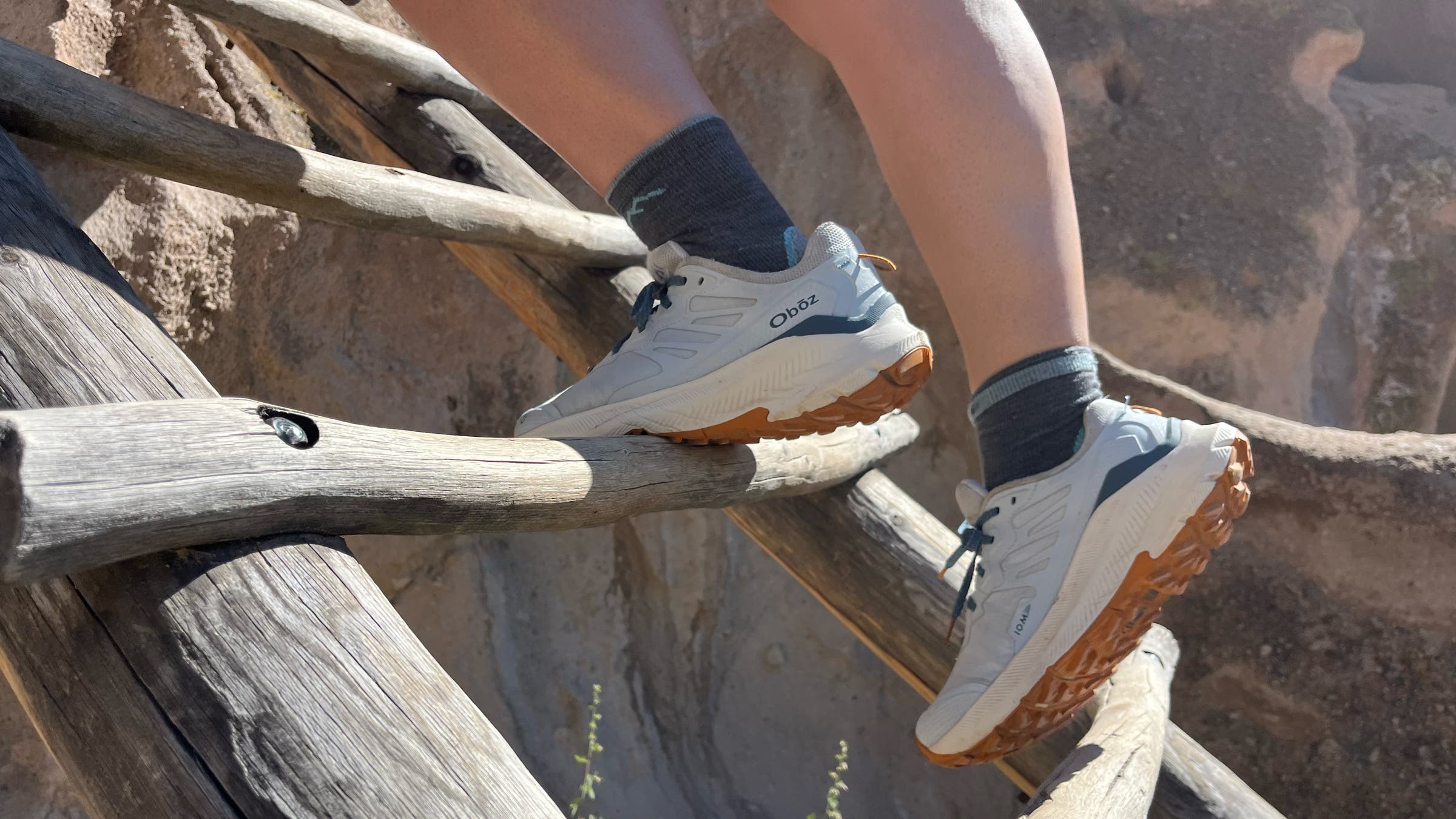
We recommend the Katabatic Winds for hiking in hot weather, thanks to a winning combination of breathable mesh upper and welded TPU overlays that feels airy while still keeping out dust and sand. There’s no waterproof option, so while the Winds will hold your footing on slick ground, we don’t recommend them for rainforests or other predictably wet climates.
Even on an eight-hour hike around southern Wisconsin in 90 degrees, my feet felt light, never swampy or weighed down. For Bodzick, the Winds are her go-to travel hiker, because they pack small and pass as a cute walking shoe for days in town. On a 95-degree day with 95-percent humidity in Seoul, Korea, she put 35,000 steps on her Katabatic Winds without a single blister. “It’s kind of a magic sneaker,” she reported. “You can’t plod in these, even if you try.”
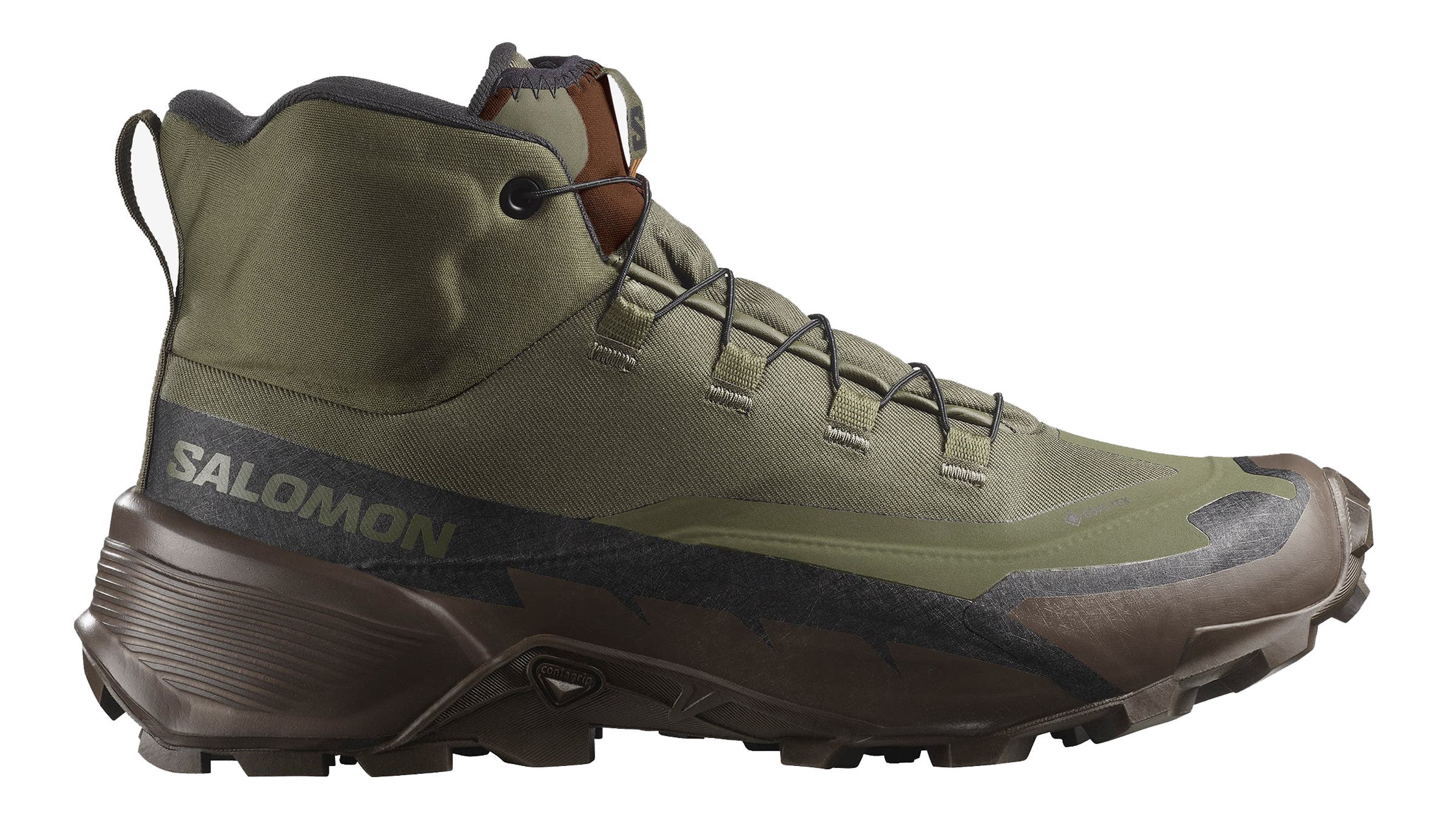
Most Agile
Salomon Cross Hike Tracker GTX
Weight: 14.5 oz
Sizes: 5-15
Pros and Cons
+ Super nimble
+ Stylish
+ Easy lacing
– Not much support for loads
The Cross Hike Trackers are like the ballet shoes of hiking boots: flexible and close-fitting, providing an uncommon nimbleness that testers particularly appreciated while scrambling off-trail. The waterproof and breathable synthetic upper doesn’t end at the edges of your foot, but instead wraps around the midsole, so the boot itself hugs your foot like a sock.
This model is a successor to the popular Salomon Cross Hike 2, but with notable improvements: the Tracker is built on a wider last, which better fits normal-width feet. Salomon’s one-handed quicklace system now routes through the top of the boot’s tongue, which pulls it and the cuff snug against your ankle, almost like a gaiter. On an all-day hike along the coast of Lake Superior, one tester reported that she could “scramble up bluffs without hesitating” thanks to the close fit, and found the Trackers perfect for agate-hunting on beaches en route: “I didn’t get any gravel in my shoes, and I could scamper into the water or get caught by waves and my feet stayed dry.”

The Trackers have no shank or rock plate, so you may want an option with greater underfoot protection for treacherous scree or treks with multi-day loads. But thanks to their ankle-hugging collar and EVA foam midsole, they felt plenty supportive for long day hikes with packs up to 20 pounds. The rubber outsole with wide-set Y-shaped lugs gripped well to mud and wet rocks, making testers feel both sprightly and secure. If you’re looking for an elegant unisex hiker that’ll have you light on your feet, the Trackers won’t disappoint.
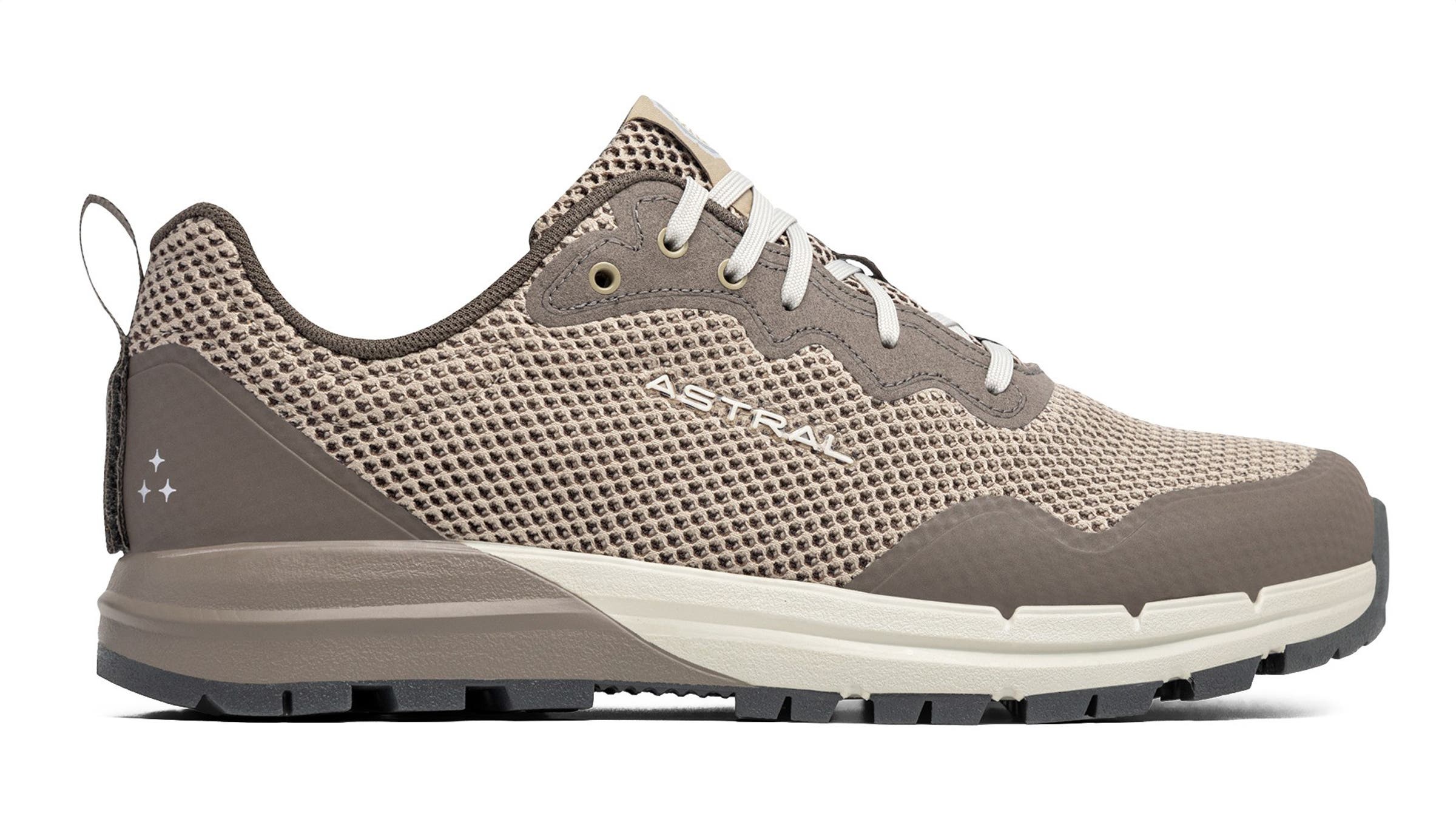
Best for Getting Your Feet Wet
Astral TR1 Mesh 2.0
Weight: 10.7 oz
Sizes: 6-15
Pros and Cons
+ Ultralight
+ Wide toebox
+ Great traction
– Not particularly supportive
Most hikers avoid soggy feet like the plague by staying clear of foot dunkings. But when water crossings are unavoidable, those duds better dry out—fast. In our testing, Astral’s airy, ultralight TR1 Mesh 2.0 hikers felt comfortably dry within a half hour of wading on an 80-degree day, thanks to a closed-cell foam midsole, all-mesh upper, and water drainage ports in the toe. Even on dry trails, our minimalist testers loved them as multi-purpose “barefoot”-style hikers: With their zero-drop footbed and wide toe box, they’re about as close as you can get to hiking sans-footwear without wearing a sandal.
A previous iteration of these shoes had one main weakness: the mesh upper was prone to tearing. The newest version, however, features reinforced eyestays and ultrafine rPET mesh that’s nearly twice as strong as the previous material; Michigan-based tester Carrie Masters reported that her version 2.0s still seemed almost brand new after well over 200 miles.
The nitrogen-infused TPE foam midsole is more cushioned and durable than the EVA used in previous versions, while a semi-rigid shank supports hikers with moderate daypack weights. Testers were particularly impressed by how the sticky rubber outsole with 5mm lugs provided stability on slippery ground, including ice and slick rocks. “I was moving pretty speedily over wet rocks and roots,” reported Bozeman, Montana-based tester Chrissie Bodznick. “I felt complete confidence in the way the shoe kept me where I wanted to be.”
Later, Bodznick took the shoes on a 7-mile training run up the overflowing New World Gulch Trail. “My feet got wet, of course, but the shoes were still comfortable, and I was really impressed by how well they performed for running,” she said. Pair with neoprene or wool socks in cooler weather, or when you want to stay a bit more insulated.
Products To Avoid
Hiking is cool. We get it. But an influx of companies borrowing from traditional hiking aesthetics for their “hiker” and “alpine” boots will have you slipping—or worse—if you wear their shoes on rough terrain. Companies like J. Crew, Dr. Marten, and even Hermés all offer hiking-inspired footwear with a heritage vibe but none of the technical specs of actual hikers. If you want an old-school look with actual mountain chops, spring for Danner’s Mountain Lights ($430), the iconic boots that spawned a hundred imitations.

How to Choose Hiking Boots
What Type of Hiking Boot Do You Want/Need?
The first step in buying hiking boots is determining your primary use. Are you planning a thru-hike or walking your dog in the woods after work? Will you be on wide dirt trails or scrambling over scree? Do you live in a desert or a rainforest? Answer these questions to determine whether you need a rugged hiker, a simple trail shoe, or something in-between.
Consider the Level of Support You Want
In general, the rougher the terrain you’ll be crossing and the more weight you’ll be carrying, the more support you want in your boot. A higher cut will keep your ankles supported while you’re on slippery or uneven ground, but might be overkill for a gentle walk on a flat trail. Similarly, low-cut boots can be comfortable but leave you vulnerable to ankle-rolling when you’re carrying a heavy pack. Midsole cushioning, shanks, and stiffer, thicker uppers can also increase support. More support also typically results in a heavier boot, which will lead to increased effort and fatigue over the course of a long trip.
What Type of Traction and Outsole Do You Need?
For traction, particularly on wet or sloped surfaces, look for a deep and varied tread pattern. A rock plate—a protective plastic or carbon sheet between the midsole and outsole—can make the difference between happy and sore feet at the end of a day of crossing rough terrain.
Do You Need Waterproof Hiking Boots?
Many boots today, including several on this list, are available in both waterproof (often Gore-Tex) and non-waterproof versions. The waterproof versions will keep your feet dryer during rainfalls or stream crossings, but can get clammy when your feet sweat. If you’re in a warm, dry climate, or know that you’ll only be doing day hikes, you’re probably better off without the waterproof version.
Above All, Consider Fit
Fit is key; a boot that works perfectly for one person might be miserable to someone with a different foot shape. For that reason, unless you know how a certain brand’s shoes fit your feet, it’s wise to try on boots in-person (or if you’re shopping online, be willing to return them if they’re not perfect). Your feet swell over the course of the day, and will swell even more while hiking, so try on boots in the afternoon or evening and give yourself a little breathing room past the toes.
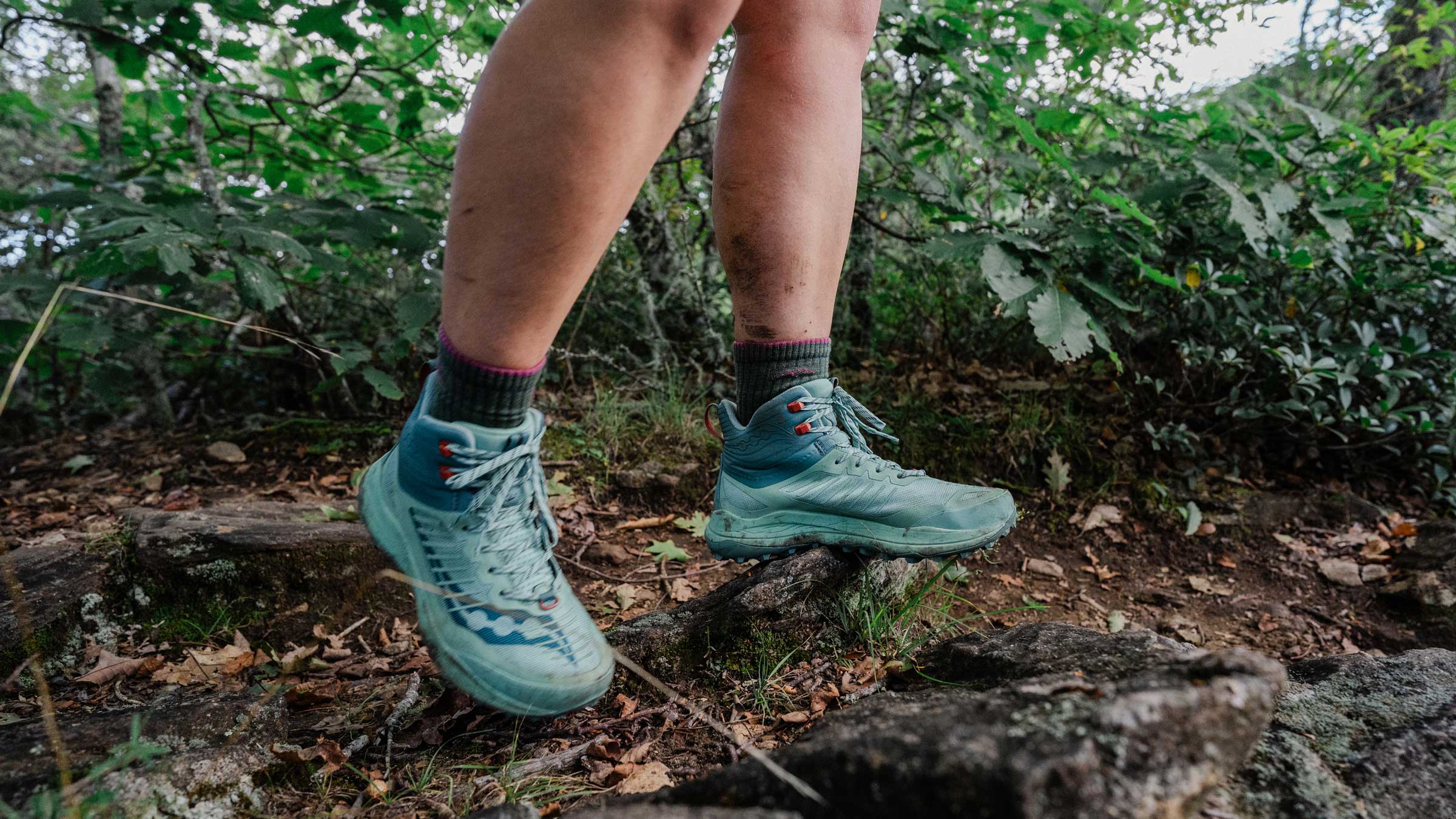
How We Test
- Number of testers: 12
- Number of miles hiked: approximately 1,200
- Highest elevation: 14,264 feet
- Number of dogs who joined us: 5
- Test States: New Mexico, Wisconsin, Michigan, Montana, Alaska, Washington, Massachusetts, Kentucky, Minnesota, Oregon, Vermont, Colorado. Also: Canada, Norway, and Korea.
Throughout the year, our testers from across the United States test dozens of hiking boots in a wide range of trail conditions, ranging from Kentucky’s root-strewn hills to Alaskan tundra. All testers are avid hikers, though they represent a spectrum of experience levels and goals, from a former thru-hiker and marathon trail runner to a duo of mushroom-hunters and a determined dog-walker. Each boot model is tested by at least two people over multiple day hikes, foraging jaunts, and backpacking trips.
Testers put boots through their paces in as many ways as possible, seeking out varied terrain and distances, and going out of their way to stand in streams and pools (and, in at least one case, a full bucket of water—drought inspires creativity). After their hikes were completed, testers filled out detailed surveys about their impressions of the boots, reporting on support, comfort, grip, cushion, durability, breathability, and sizing, among other factors. At the end of the season, nine clear winners rose to the top.
Meet Our Lead Testers
Blair Braverman
Braverman (@blairbraverman) is an adventurer and writer who spends her winters mushing and her summers finding any other way to get out in the woods. She lives near the Nicolet National Forest of Wisconsin and typically heads out for long day hikes or overnights. Her longest hiking trip has been the 400-mile Oregon Coast Trail.
Chrissie Bodznick
A Montana-based wildland firefighter, environmental educator, and natural history filmmaker, Bodznick (@cbodznick ) spent the summer testing boots on the East Coast, where she hiked in the woods, rocky shores, and salt marshes of Cape Cod.
Rachael Drechsel (@r_drechsel) and Colleen Michelson are avid foragers and outdoors people based in Madison, Wisconsin, who scour the forest for mushrooms and hike daily with their pit bull Reuben (@boi_meets_bea).
Danica Novgorodoff (@novgorodoff) is an artist and graphic novelist living in Kentucky. She is an avid hiker and trail runner, and enjoys camping, backpacking, and the occasional trip to a volcano or rainforest.
Allison Bodznick (@abodznick) is a university administrator and grad student in Boston. She’s a mostly short-distance hiker (unless there’s a hot spring at the end), an adult-beginner skier, and an urban gardener. She says she has never regretted a swim.
Jenny Baker (@sheventuresearth) is the founder of Sheventures, an outdoor adventure camp for women in Chattanooga, Tennessee, and is a race director for the Georgia Jewel Ultra Trail Race. She loves the outdoors more than cake.
Carrie Masters (@birdandtoad) is a chef in northern Michigan who runs Bird and Toad, a women-led food/art collective that features largely foraged ingredients. When she’s not cooking, she’s usually out on the trail.